
What Are Some Key Components of Successful Budgeting? 7 Rules
What are some key components of successful budgeting? Budgeting is the basis of financial security and it allows individuals and families to reach their financial ambitions without excessive stress. A successful budget isn’t a spreadsheet, it’s a roadmap that shows you what you should prioritize, how you should be getting there, and when you should change it. Be it saving up for a big purchase, paying off debt, or investing, knowing the three major parts of a budget can make all the difference.
Contents
- 1 Rule #1: Setting Clear Financial Goals
- 2 Rule #2: Tracking Income and Expenses
- 3 Rule #3: Use Budgeting App
- 4 Rule #4: Establishing and Keeping to a Flexible Budget
- 5 Rule #5: Building an Emergency Fund
- 6 Rule #6: Keeping and Update the Budget on a Regular Basis
- 7 Rule #7: Avoiding Common Budgeting Mistakes
- 8 Conclusion
Rule #1: Setting Clear Financial Goals
Budgeting starts with financial goals that are easy to comprehend. Goals give your budget meaning and purpose so you are spending and saving according to your long-term plans. Whether you’re looking to save for a vacation, pay off debt or set up an emergency fund, having goals that are easily recognizable keep you on track and on-track.
What are some key components of successful budgeting? Setting clear financial goals and creating a realistic plan are essential steps to take control of your finances. Goals are important to budgeting success, and they are short, medium and long-term. Goals in the short-term, such as saving $500 for an emergency fund, offer wins on the fly and encourage momentum. Medium-term targets like saving for a car or a wedding are more ambitious but pay big dividends. Financial security and security are built on the longer term, such as retirement or home ownership. All three kinds of goals will be integrated into your budget so that you don’t go out with the wrong mindset.
Understanding what are some key components of successful budgeting is essential to achieving these goals. Breaking each target into bite-sized chunks, for example saving a particular amount per month, you build a success map. This way you stay on track and budgeting does not seem so daunting.
Types of Financial Goals:
- Temporarily: Invest $500 for an emergency fund in 3 months.
- Long-term: Pay $10,000 down in 2 years for a car.
- Long term: Save up $500,000 over 30 years to retire.
To answer the question of what are some key components of successful budgeting, having measurable, time-bound goals tops the list. Unless we set such things, we forget the things we’re looking for and revert to wasteful spending patterns. Uncluttered financial plans make sure every dollar you spend does something, and brings you one step closer to your money goals.
Rule #2: Tracking Income and Expenses
To achieve long-term financial stability, it’s important to ask yourself, what are some key components of successful budgeting? These include tracking income, managing expenses, and saving consistently. You need to know your income and expenditures to figure out how you spend money and make a good budget. If you don’t know what the money is coming in and how much it’s going where, then you can’t really make decisions. This step provides clarity, ensuring that you have a solid foundation for addressing what are some key components of successful budgeting.
Do a rough list first of everything you are making (your salary, your freelance, side work etc). And then break down costs into fixed costs like rent and bills, and variable costs like groceries, transportation, and entertainment. This way, you can pinpoint where you are spending your money and see where you can save up on extras. Other software (like budgeting software or spreadsheets) automate tracking.
Also regular tracking helps you track seasonal or rare expenses. Whether it’s vacation expenses or your annual premiums, without budgeting, everything can go awry. Incorporating these costs into your plan is a practical way to manage finances proactively and answer what are some key components of successful budgeting in everyday life. Change your tracking approaches in time as you like and as you earn.
Categories for Expense Tracking:
- Fixed expenses: Rent, utilities, insurance.
- Variable expenses: Groceries, transportation, entertainment.
- Savings: Emergency fund, retirement contributions.
- Debt payments: Credit cards, loans.
Third is consistency when tracking income and expenditures. With regular reports, you’ll be able to see how your financial situation is going and can make changes to your budget accordingly. By making tracking a habit, you’ll build the discipline required to address what are some key components of successful budgeting and improve your overall financial well-being.
You can use this template for easy:
| Category | Subcategory | Budgeted Amount ($) | Actual Amount ($) | Difference ($) |
| Income | Salary | |||
| Income | Freelance/Other Income | |||
| Fixed Expenses | Rent/Mortgage | |||
| Fixed Expenses | Utilities | |||
| Fixed Expenses | Insurance | |||
| Variable Expenses | Groceries | |||
| Variable Expenses | Transportation | |||
| Variable Expenses | Hygiene | |||
| Variable Expenses | Sports & Fitness | |||
| Variable Expenses | Wellness (e.g., therapy, spa) | |||
| Savings | Emergency Fund | |||
| Savings | Retirement Savings | |||
| Debt Payments | Credit Card Payments | |||
| Debt Payments | Loan Payments |
Read more: Find The Cheapest Grocery Store in 2025
Rule #3: Use Budgeting App
When you’re living in the whirlwind, it can become stressful to work on finances. Thanks to technology, budgeting is no longer so hard and can be done using mobile apps. Whether you’re looking to budget, or saving up for an expensive item, or simply wanting to pay off debt, the following free budget apps will help you keep your money in check. Each app comes with special features specific to budgeting and you will easily be able find the best one for you.
Here are the top 10 free mobile personal budgeting apps in the US with feature list, pros and cons, and download links for both iOS and Android.
- Monefy
Description: Monefy allows you to quickly track costs and see how your money is spent.
Features: User manual entering of income and expenses, configurable groups and cross-device synchronization.
Advantages: Very easy to use, flexible, and multiple currencies.
Negatives: Bank synchronization does not happen automatically, you need to enter manually.
Download: App Store | Google Play
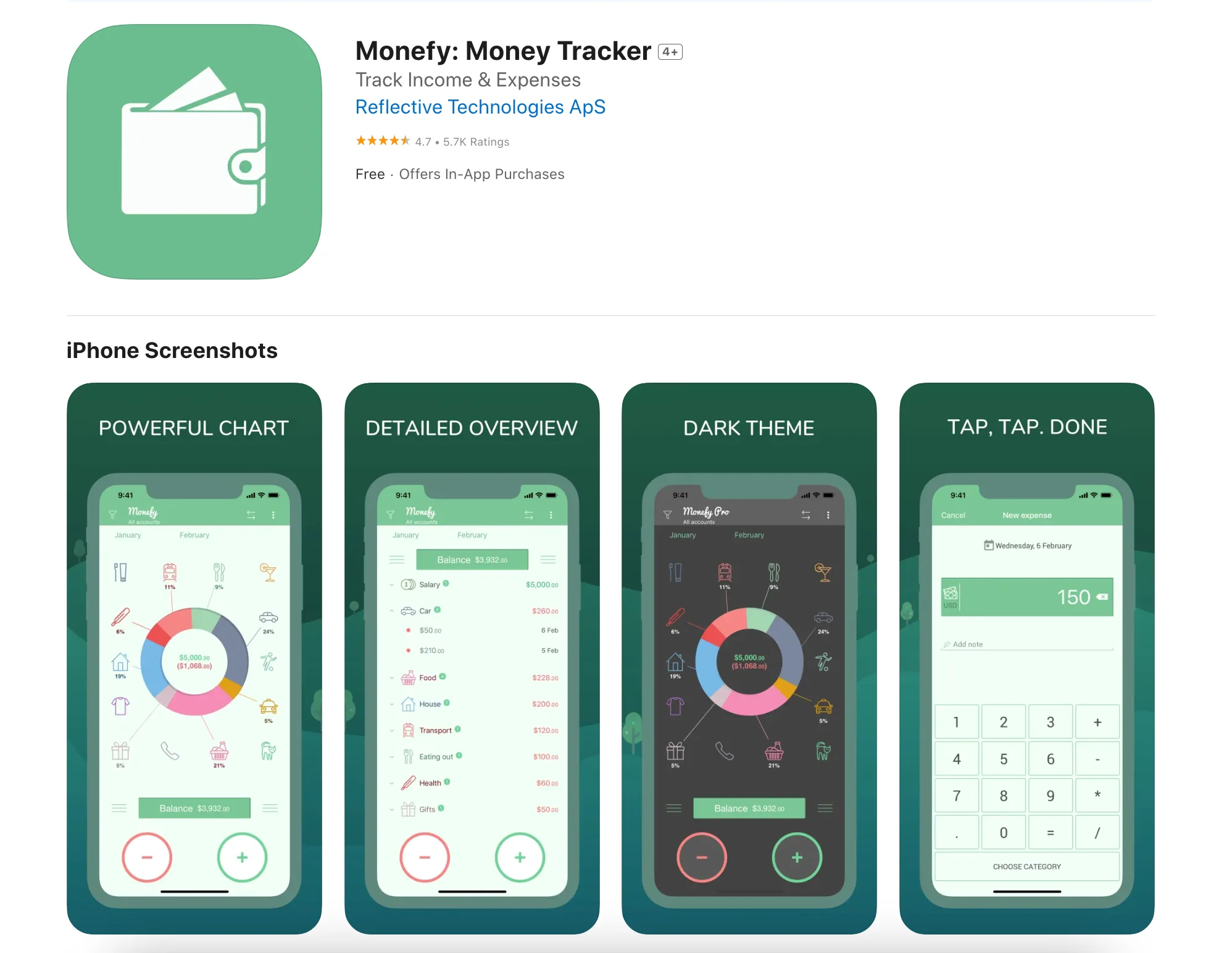
- Honeydue
Description: Honeydue is a financial app where couples budget together, share expenses, bills, and financial objectives.
Use Cases: Tracking expenses, Bill Reminders, Shared Accounts and customizable Spending Categories.
Benefits: Great for families; allow for team budgeting and shared financial data updates live.
Bottom Line: Only good for couples; a little less useful for single users.
Download: App Store | Google Play
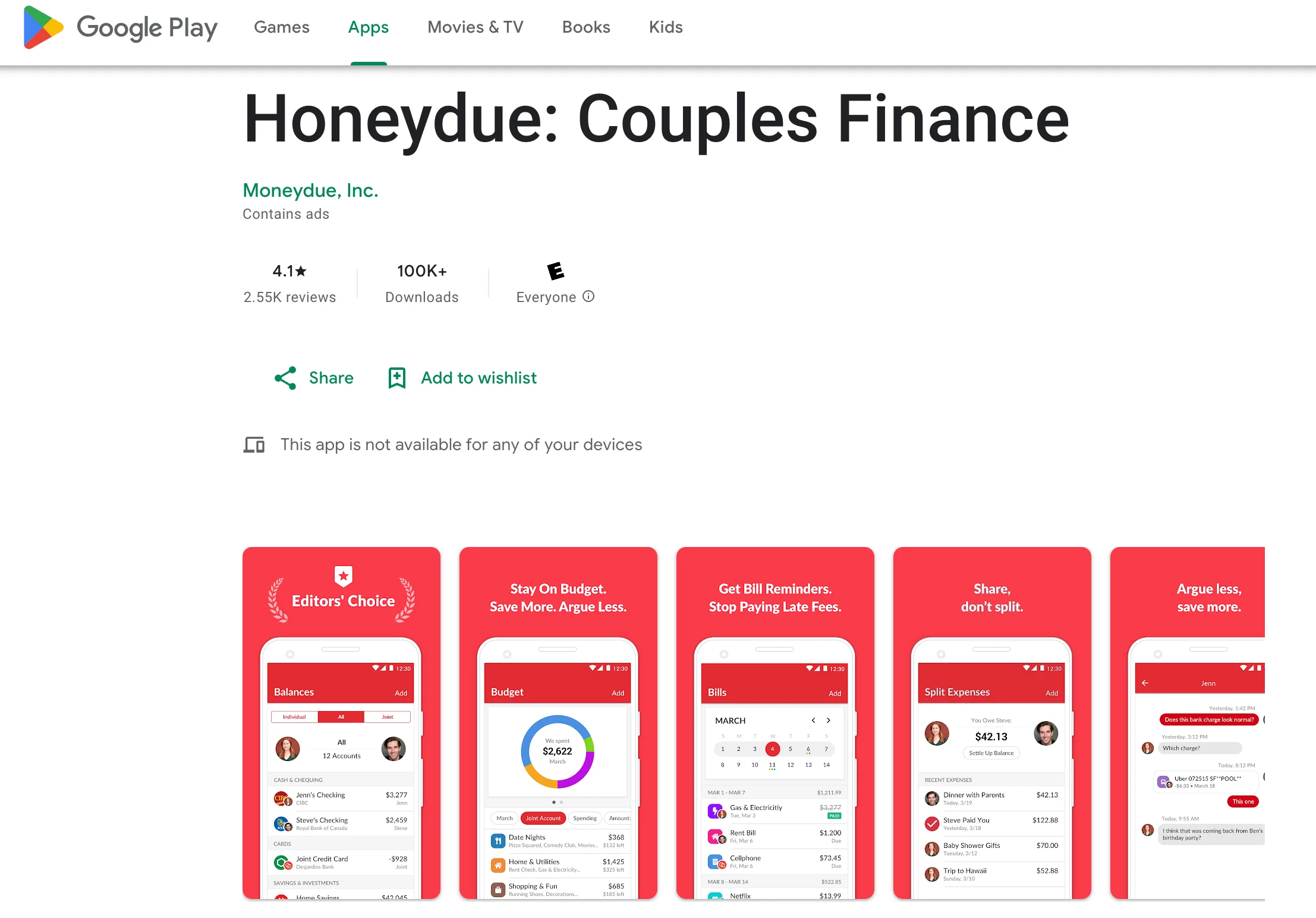
- Goodbudget
Description: Modelled on the envelope budgeting model to assign funds to spending categories.
Functions: Budget management, common accounts, debt management.
Benefits: Allows household sharing and cross-platform usage.
Cons: Needs to be entered manually on all transactions.
Download: App Store | Google Play
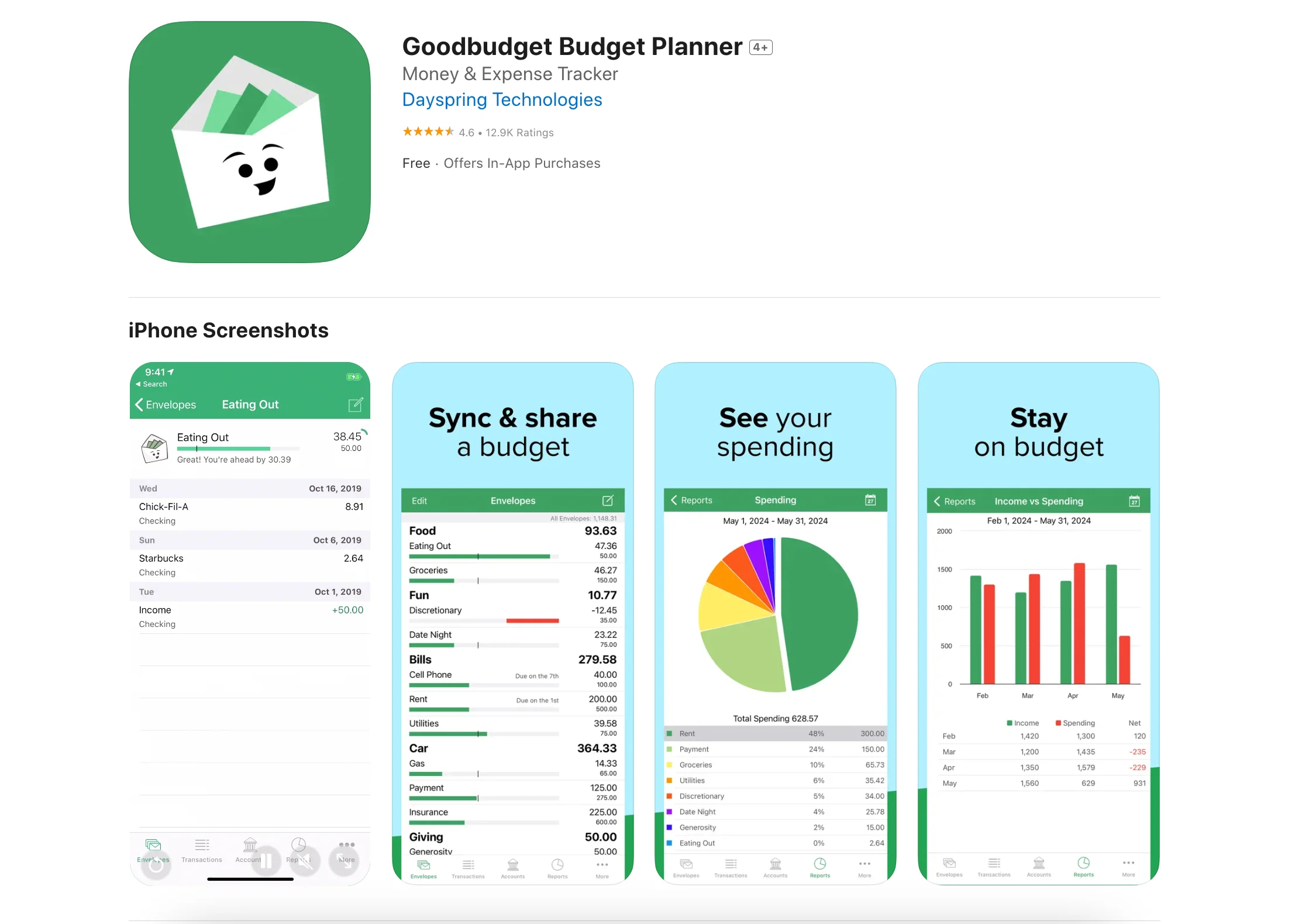
- PocketGuard
Description: PocketGuard — displays available net income after taking care of bills, objectives, and expenses.
Pros: Automatic expense tracking and savings goal setting.
Benefits: “In My Pocket” mode to monitor disposable income.
Limitations: Few features for free version.
Download: App Store | Google Play
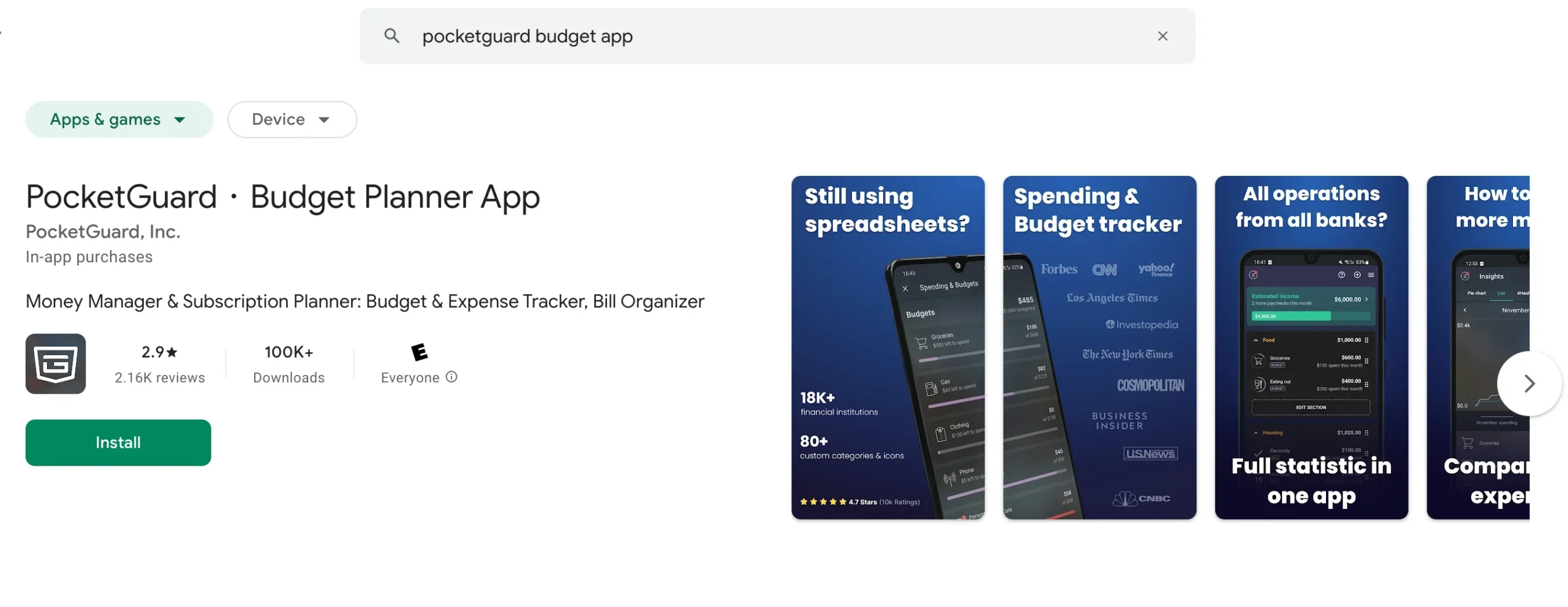
- EveryDollar
Description: Based on zero-based budgeting, this app allows you to divvy up every dollar with tasks.
Uses: Budgeting, Expense management, and Debt consolidation.
Benefits: Easy to use and great for consolidating debt.
Limitations: Free limited version; automatic syncing requires subscription.
Download: App Store | Google Play
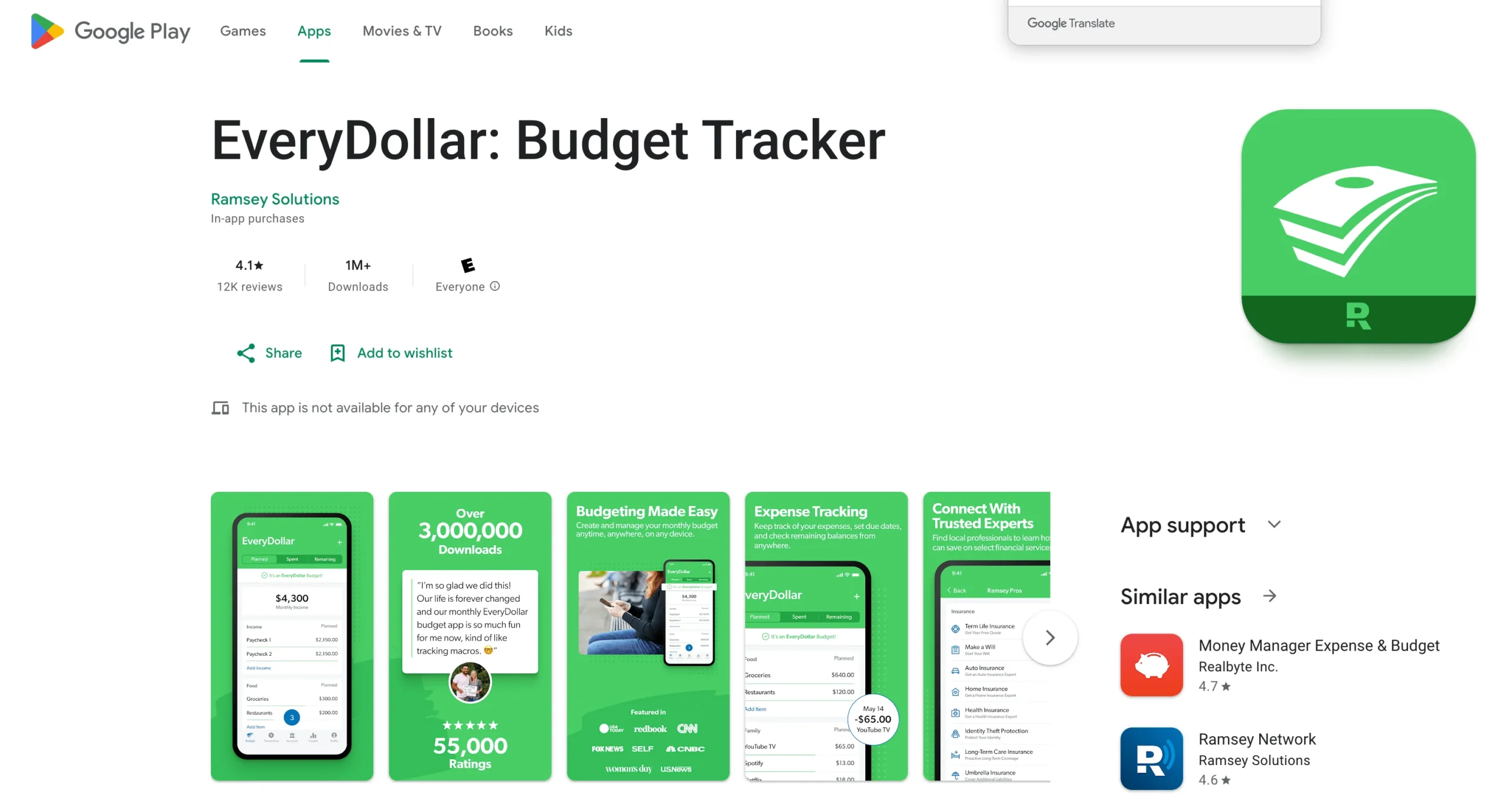
- YNAB (You Need a Budget)
Description: Focuses on proactive budgeting to remove the paycheck-to-paycheck cycle.
Features: Budget, goal setting, and debt tracking on a real-time basis.
Benefits: Great for financial planning and education.
Cons: Must be subscribed after the free trial.
Download: App Store | Google Play
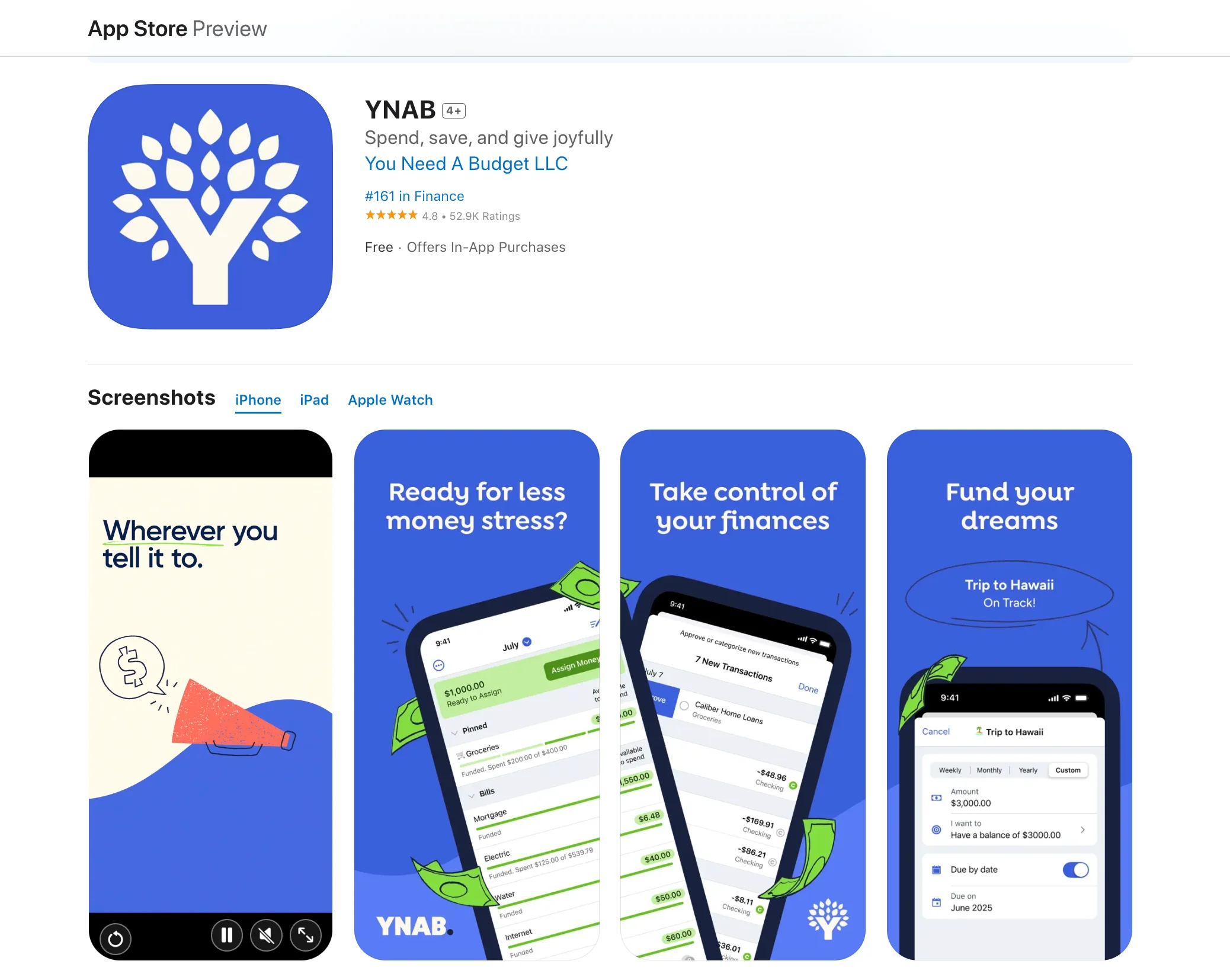
- Empower Personal Dashboard
Description: Budget, investment and retirement management all in one.
Functions: Monitors spending, investments and net worth.
Benefits: Complete financial data and retirement resources.
Pros: Only useful for high-investor users; little focus on the everyday budgeting.
Download: App Store | Google Play
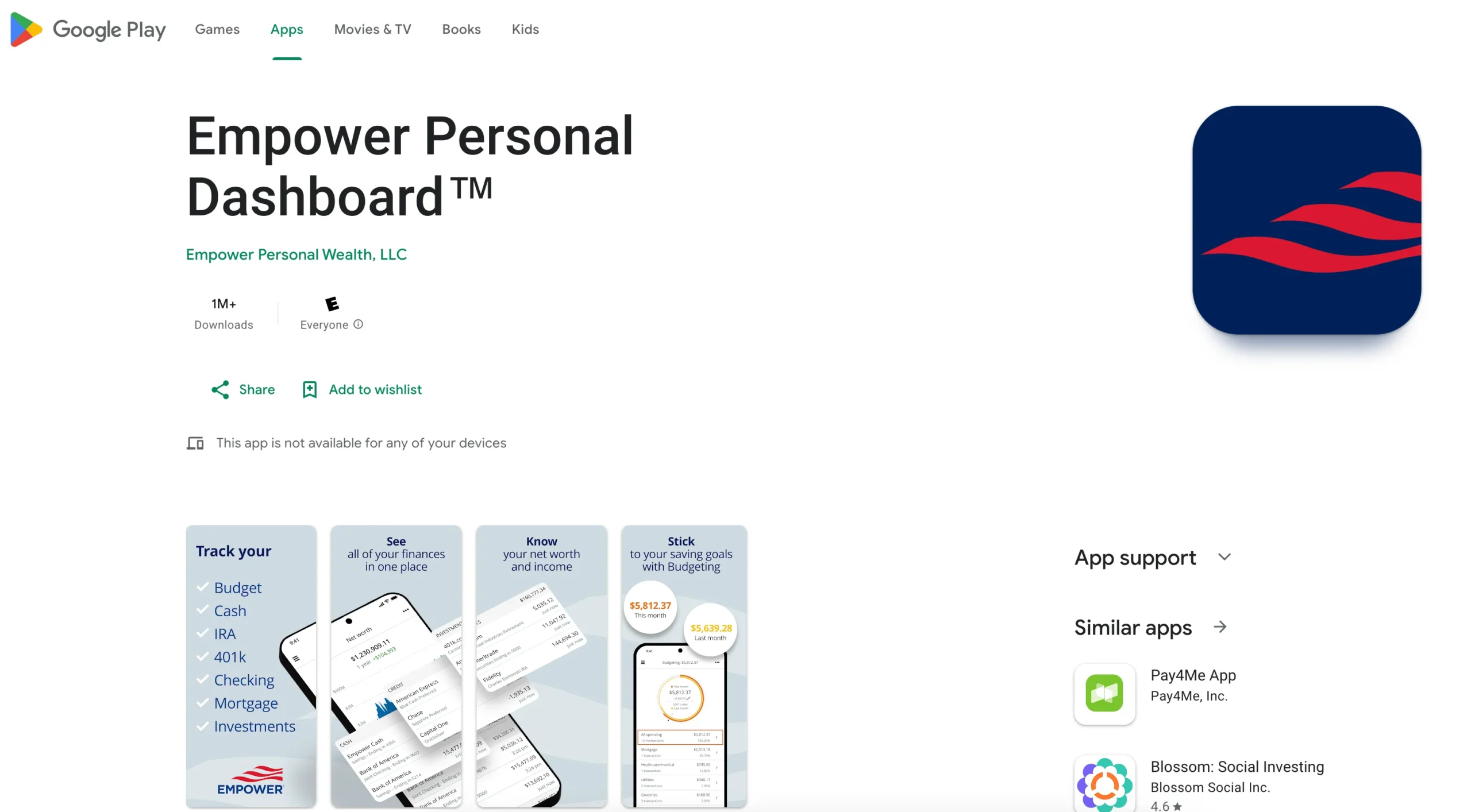
- Simplifi by Quicken
Description: Offers an individual spending plan with live budget reporting.
Features: Budget management, goal setting and auto-save.
Benefits: Continuous updates and configurable categories.
Cons: 30-day trial only — needs to be subscribed after 30 days.
Download: App Store | Google Play
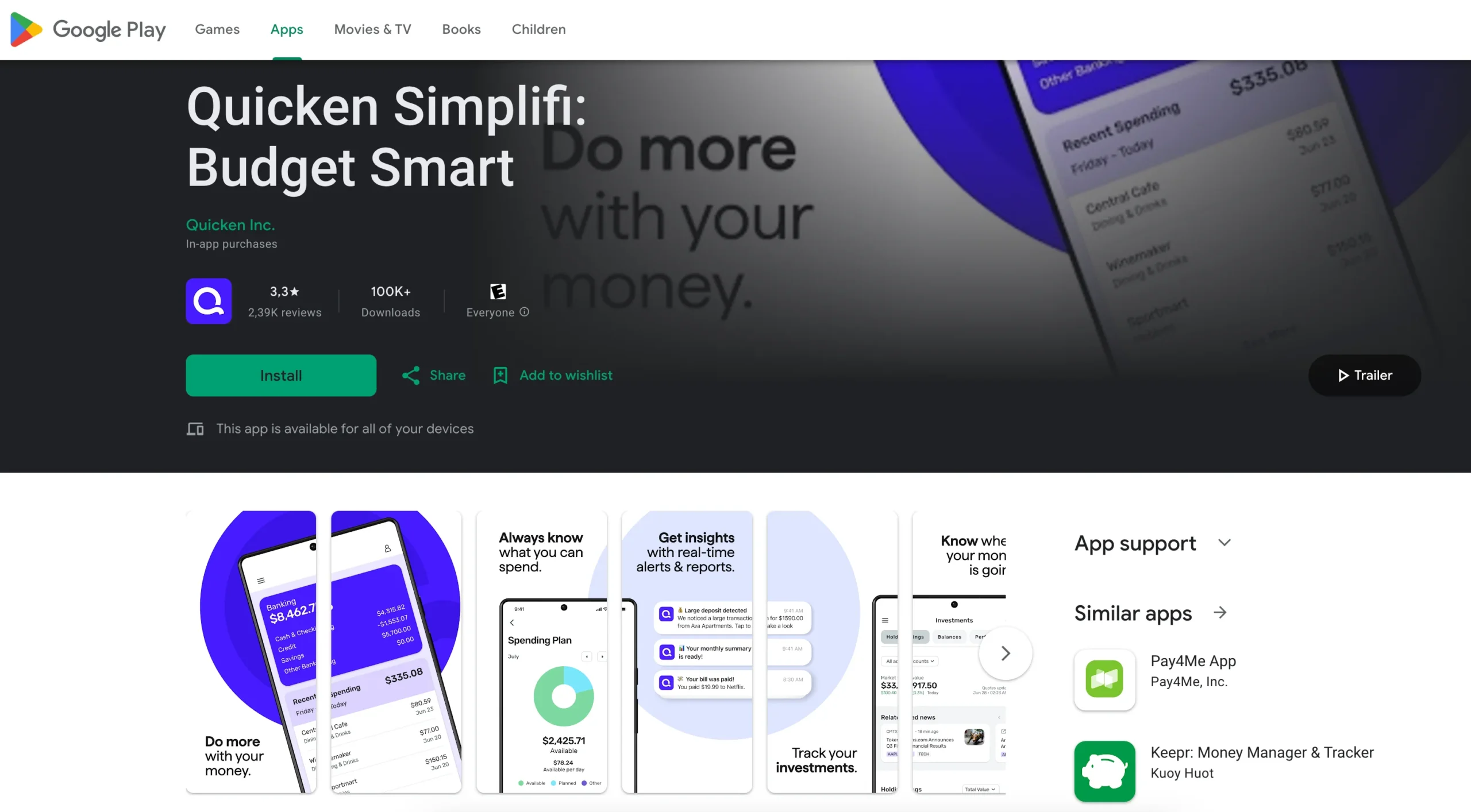
- Spendee
Description: Spendee is a budget tracking app focused on colorful, user-friendly interface.
Uses: Manual expense tracking, Group budgets, and custom wallets.
Benefits: Perfect for families and groups; accepts different currencies.
Cons: Limited free version; subscription required for advanced functions.
To Download: App Store | Google Play
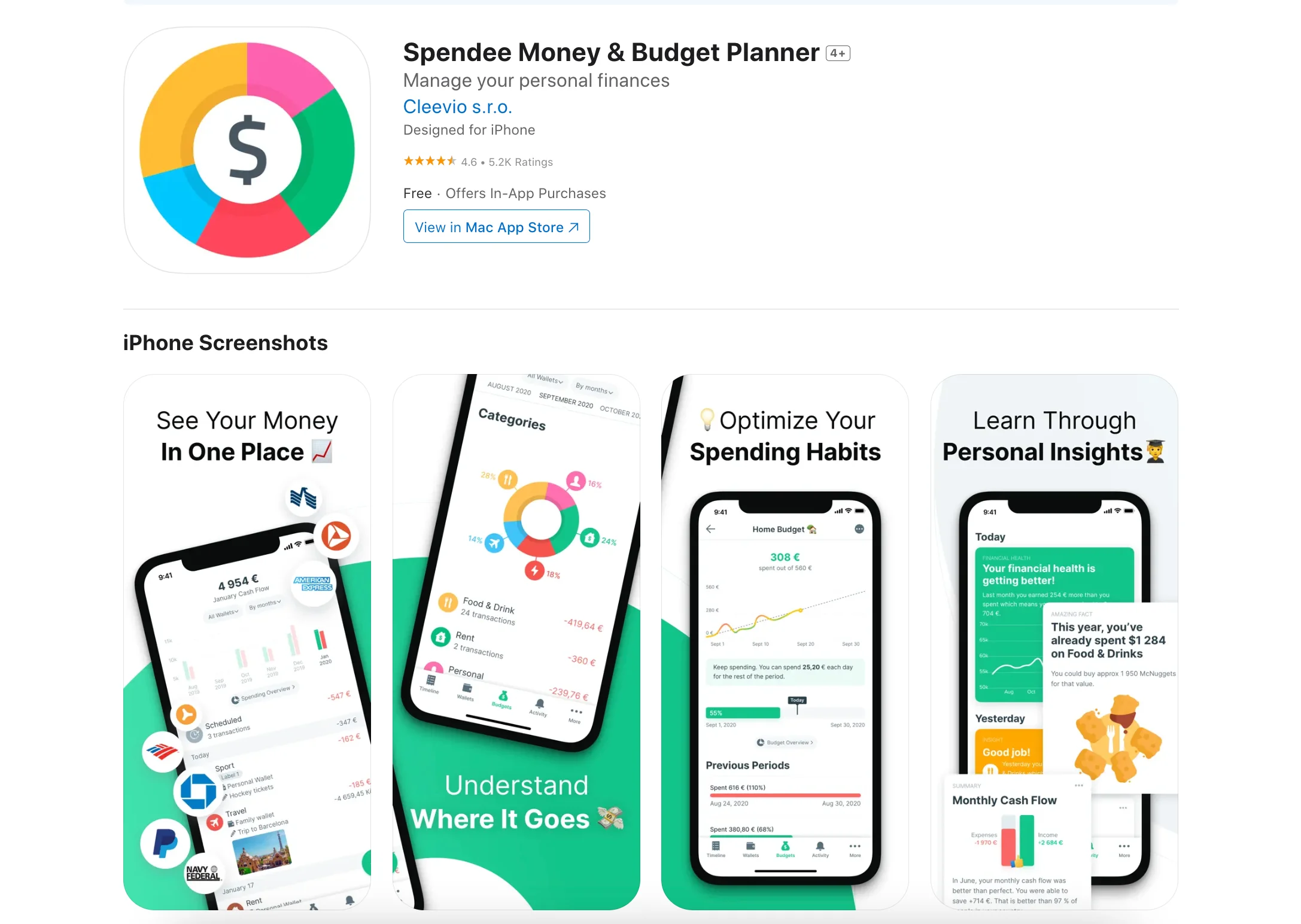
- Zeta
Description: Zeta is a couple budgeting app which helps to keep track of your joint and individual money.
Functions: Tracks joint spending, budgets together for common objectives, and syncs with several bank accounts.
Benefits: Good for couples; gives joint and individual views of money; simple to use.
Cons: Not many features in individual users.
Download: App Store | Google Play
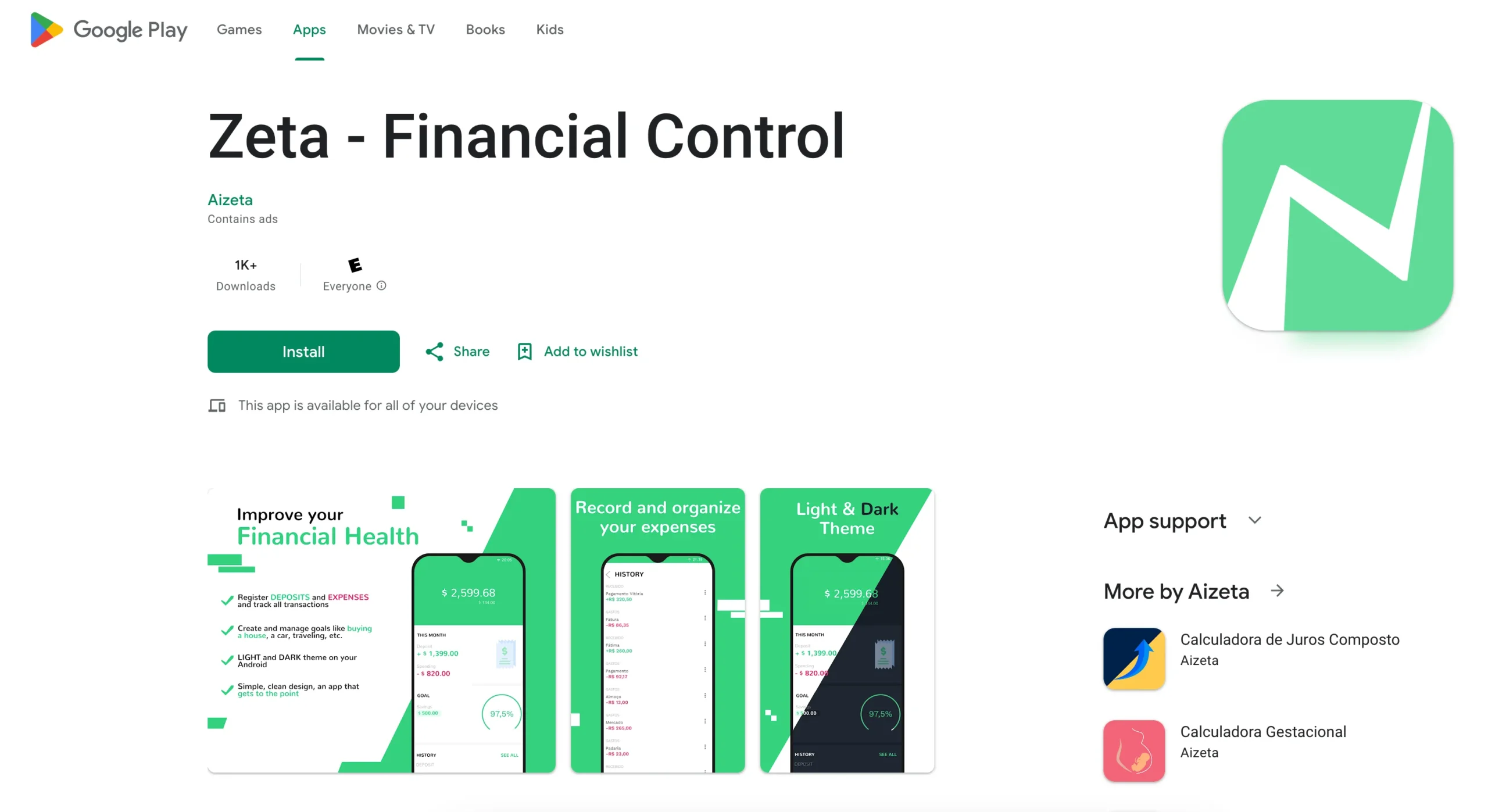
Rule #4: Establishing and Keeping to a Flexible Budget
The foundation for financial happiness is making and following a realistic budget. With a budget prepared properly, you can’t only budget your money, but it also lets you know that what you are spending money on is compatible with your values. One of what are some key components of successful budgeting is to develop a plan that reflects your actual income and expenses without being overly restrictive. Overly strict budgets don’t last very long as they do not reflect on any unexpected expenses or a little bit of fun.
Begin with all income sources and subtract your fixed expenses (rent, rent charges, payments for loans). Then invest the rest of the money in variable expenses, savings and discretionary expenses. One of the most popular is the 50/30/20 rule where 50% of your paycheck is spent on necessities, 30% on wants, and 20% is saved or repaid. You make a budget so that there is an equal amount of cash flow and slack in your budget.
You have to keep to your budget, which takes consistency and tactics that are easy to maintain. The best way to stay on top is to set bill payments and savings goals for the year. Disposable spending can be controlled by tools such as the envelope system where cash is assigned to categories. Understanding what are some key components of successful budgeting, such as flexibility and regular reviews, helps you maintain control even when life throws unexpected expenses your way.
Budgeting Methods:
- Zero budgeting: Give each dollar a purpose.
- 50/30/20 rule: Divide income evenly between needs, wants and savings.
- Spend-first-Save-first: Set savings before other expenses.
A true budget is, after all, one that you can keep for a while without going broke. When you check in with your plan, and change it when your situation shifts, you make sure it is still working for you. Building a sustainable budgeting habit not only answers the question of what are some key components of successful budgeting but also sets you on a path toward financial independence and peace of mind.
Rule #5: Building an Emergency Fund
Having an emergency fund is a critical part of any budget. It acts as your financial lifeline in case of medical bills, car maintenance, or sudden unemployment. Understanding what are some key components of successful budgeting highlights the importance of this fund in maintaining financial stability and avoiding debt during tough times. When you don’t have an emergency fund, even small losses can upset your finances and rip you in the long run.
The average is to save between 3–6 months of expenses. This number helps make sure you’re covered for big disruptions and in the know. To get started and don’t get too overwhelmed by this, try setting a goal to start small, $1,000 for small emergency situations. Save a fixed amount every month and build up your savings gradually by transferring the amount to a different savings account as an automatic feature.
An emergency fund should be close by but separate from your other accounts so you are less likely to reach into it when you don’t need it. Savings accounts with high returns are perfect because it grows your money but is ready for use when you need it. Incorporating this step answers what are some key components of successful budgeting, as it ensures financial resilience and peace of mind even when facing unexpected challenges.
How to Develop an Emergency Fund:
- Aim to start at $1,000 for small emergencies.
- Auto-inject monthly amount into a separate savings account.
- Get bonuses, tax breaks, or lucky breaks to add to your pot.
If you put an emergency fund at the top, you have a buffer that saves the rest of your money from unexpected costs. It’s a crucial step in any financial plan and embodies what are some key components of successful budgeting: preparedness, foresight, and financial security. By doing so, you remain in charge when things don’t go according to plan.
Rule #6: Keeping and Update the Budget on a Regular Basis
Your budget must be updated and refreshed on a regular basis so that it is always relevant and efficient. Budgets shift when pay increases come, expenses increase, or new priorities arise, so keep up with your budget and move with it. One of what are some key components of successful budgeting is flexibility, which allows you to make adjustments as your life and goals evolve. Without checking your budget on a regular basis, it can get out of date and not accommodate you financially.
One good way is to check your budget every month or quarter. This will help you find patterns, like spending too much in one area or having a surplus that you can transfer to savings or paying off debt. Things like holidays (such as Christmas shopping or winter high energy bills) are some common seasonal expenses that need to be managed periodically. Staying on top of things can keep your budget realistic and up to date.
Adjustments must also reflect life transitions – when you move house, have children, change your career. These events can be financially transformative, so revising your budget will keep you on track. Regularly revisiting your budget not only answers the question of what are some key components of successful budgeting but also keeps you motivated to stick to your financial plan. A budget that grows with you will also be a much better investment.
Reasons to Look at and Make Changes To A Budget:
- Incentives & Retention: Increases in salary, job transfers, lost income.
- Large Life Adventures: Moving or Marrying or Having Children.
- Seasonal cost: Holidays, vacation, back-to-school.
By doing budget reviews daily, you develop a plan that works in the background regardless of what happens on the outside. This ongoing iteration is what some of the defining elements of budgeting work to keep your plan working, realistic, and current with your changing demands.
Rule #7: Avoiding Common Budgeting Mistakes
If you want to develop and sustain a budget plan, being sure that you don’t make the typical budgeting errors is important. Most people get into the traps such as underestimating costs, forgetting random costs, or being overzealous with the budget. Recognizing what are some key components of successful budgeting helps you sidestep these pitfalls and create a plan that works in real life. An actual budget is balanced between what’s needed and an allowance for emergencies and a little extra spending on the side.
An easy mistake to make is not planning for irregular or seasonal expenses like yearly insurance payments, holiday shopping, or car repair. These expenses will break your budget and cause you to go overboard if you don’t plan for them. Including a buffer for such expenses is one of what are some key components of successful budgeting that ensures your financial plan remains balanced and manageable.
A further trap is forgetting to report tiny, everyday costs such as coffee runs or subscriptions. These add up fast and get you out of control with your budget before you know it. What’s more, you don’t give yourself much leeway in budgeting, and this essentially means no room for fun or unexpected change, and then it’s usually time to give up and go back to the drawing board. Budgeting can work if you have the right balance, flexibility, and expectation.
Common Budgeting Mistakes to Avoid:
- Not thinking of little things like snacks or streaming apps.
- Overlooking strange expenses such as gifts for holidays or annual plans.
- Becoming too strict and you never have any room for fun or compromise.
If you know what mistakes you are making and fix them, then you will have a viable and sustainable budget. Incorporating what are some key components of successful budgeting, such as realistic planning and proactive adjustments, ensures your budget is a tool for success rather than a source of stress. This way, you’ll stay in the game and gain self-assurance with finances.
Conclusion
Budgeting is not just a math equation — it’s figuring out a budget that’s the right fit for you, your priorities, and your way of life. By focusing on what are some key components of successful budgeting, such as setting clear financial goals, tracking income and expenses, building an emergency fund, and reviewing your plan regularly, you can take control of your finances and achieve long-term stability. A successful budget is not only informed, but also empowers you to know when and how much to spend and save.
Recall that flexibility is a very important budgetary ingredient. Life doesn’t go as planned, and your financial roadmap needs to be flexible enough to accommodate for the unexpected and to help keep you on track toward your goals. With practices such as reviewing and updating regularly included, your budget will stay up-to-date with your needs and priorities. These habits exemplify what are some key components of successful budgeting, making the process both practical and sustainable.
If you’re putting money away for a particular purpose, or aiming to be financially independent, or simply wanting to reduce financial pressure, a balanced budget is the key to success. By understanding what are some key components of successful budgeting and applying them consistently, you can create a system that supports your aspirations and provides peace of mind. Do it one step at a time, don’t give up, and you will be financially healthier for it.
Discover more from Money-Saving Tips & Personal Budgeting
Subscribe to get the latest posts sent to your email.





















3 comments